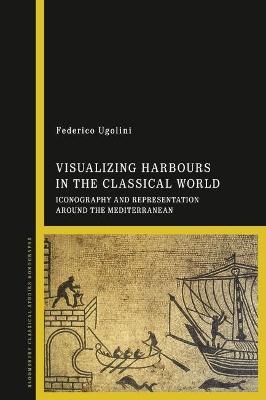
Visualizing Harbours in the Classical World
Iconography and Representation around the Mediterranean
Seiten
2022
Bloomsbury Academic (Verlag)
978-1-350-19463-2 (ISBN)
Bloomsbury Academic (Verlag)
978-1-350-19463-2 (ISBN)
In recent years, there has been intense debate about the reality behind the depiction of maritime cityscapes, especially harbours. Visualizing Harbours in the Classical World argues that the available textual and iconographic evidence supports the argument that these representations have a symbolic, rather than literal, meaning and message, and moreover that the traditional view, that all these media represent the reality of the contemporary cityscapes, is often unrealistic. Bridging the gap between archaeological sciences and the humanities, it ably integrates iconographic materials, epigraphic sources, history and archaeology, along with visual culture.
Focusing on three main ancient ports – Alexandria, Rome and Leptis Magna – Federico Ugolini considers a range of issues around harbour iconography, from the triumphal imagery of monumental harbours and the symbolism of harbour images, their identification across the Mediterranean, and their symbolic, ideological and propagandistic messages, to the ways in which aspects of Imperial authority and control over the seas were expressed in the iconography of the Julio-Claudian, Trajan and Severii periods, how they reflected the repute, growth and power of the mercantile class during the Imperial era, and how the use of imagery reflected euergetism and paideia, which would inform the Roman audience about who had power over the sea.
Focusing on three main ancient ports – Alexandria, Rome and Leptis Magna – Federico Ugolini considers a range of issues around harbour iconography, from the triumphal imagery of monumental harbours and the symbolism of harbour images, their identification across the Mediterranean, and their symbolic, ideological and propagandistic messages, to the ways in which aspects of Imperial authority and control over the seas were expressed in the iconography of the Julio-Claudian, Trajan and Severii periods, how they reflected the repute, growth and power of the mercantile class during the Imperial era, and how the use of imagery reflected euergetism and paideia, which would inform the Roman audience about who had power over the sea.
Federico Ugolini is Postdoctoral Research Fellow at the Department of Maritime Civilizations, University of Haifa, Israel.
Illustrations
Acknowledgements
Abbreviations
1. Introduction
2. Alexandria, Rome and Leptis Magna and the Triumphal Imagery of Monumental Harbours
3. Harbours in Graeco-Roman Art: Symbolism and Identity across the Mediterranean
4. Portraying Maritime Cityscapes: An Imperial Perspective
5. The Mercantile Class: Economic Growth and Influence during the Imperial Era
6. A Postcard from the Ancient Mediterranean: Aspects of Euergetism and Paideia in Representations of Maritime Cities
7. Epilogue. Maritime Cities: An Iconography of Power
Notes
Bibliography
Index
| Erscheinungsdatum | 06.03.2022 |
|---|---|
| Zusatzinfo | 30 bw illus |
| Verlagsort | London |
| Sprache | englisch |
| Maße | 156 x 234 mm |
| Gewicht | 349 g |
| Themenwelt | Kunst / Musik / Theater ► Kunstgeschichte / Kunststile |
| Geschichte ► Allgemeine Geschichte ► Vor- und Frühgeschichte | |
| Technik ► Bauwesen | |
| ISBN-10 | 1-350-19463-8 / 1350194638 |
| ISBN-13 | 978-1-350-19463-2 / 9781350194632 |
| Zustand | Neuware |
| Informationen gemäß Produktsicherheitsverordnung (GPSR) | |
| Haben Sie eine Frage zum Produkt? |
Mehr entdecken
aus dem Bereich
aus dem Bereich
Was Pompeji über uns erzählt
Buch | Hardcover (2023)
Propyläen (Verlag)
32,00 €
auf den Spuren der frühen Zivilisationen
Buch | Hardcover (2023)
C.H.Beck (Verlag)
20,00 €


